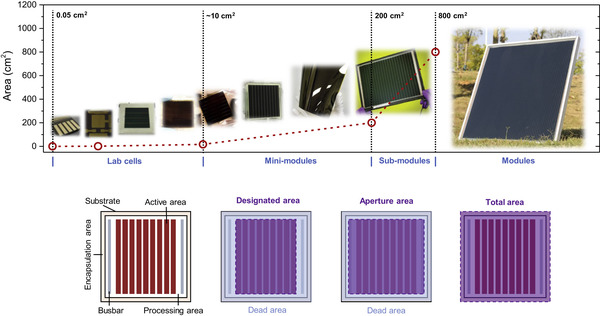Thanks to the excellent optoelectronicproperties, perovskite solar cells (PSCs) are considered a promisingnext-generation candidate for photovoltaics (PVs). Their high-power conversionefficiency and low solution-processed production cost hold promise forrealizing solar grid parity at a low cost. Despite the great progress in cellefficiency and stability, most research efforts have focused onlaboratory-scale, small-area PSCs. The key issues for successfullycommercializing perovskite PVs depend on the efficiency, stability, and cost ofPSC modules. Now, the efficiency of PSC modules lags far behind thelaboratory-scale cells. We need to be concerned about achieving industrial-scale,large-area manufacturing with high throughput for practical application of thistechnique.
In this perspective, we urge the community to evaluate and present the cell and module performance data using standard methods and establish standard protocols for evaluating the long-term stability of perovskite solar cells, which will accelerate PSC’s transition from laboratory toys to real market game changers.
https://www.sciencedirect.com/science/article/pii/S2542435119304180

Figure 1. (A) The power conversion efficiency development of different PV technologies over the last few decades.
(B) The evolution of perovskite solar modules based on different device architectures.

Figure 2. (A) The designation of PV modules and their corresponding sizes.
(B) The definition of areas used for PSC module performance measurement.

Figure 3. Measurements Toward Accurately Determining the PCE of PSCs. (A) J-V measurement of PSCs.
(B) Stabilized output measurement of PSCs. (C) Maximum power point tracking measurement of PSCs. (D) Stabilized J-V curve fitting of PSCs.

Figure 4. The Full Test Flow for Design Qualification and Type Approval of PV Modules. The laboratory-scale PSCs already passed tests are highlighted in orange. The aging testing should also be focused on the modules.